December 2019
In this issue:
 |
|
Calling all Oklahoma ELA teachers! Please take this survey about writing instruction and assessment in your classroom by Friday, December 20. The results will be used to generate workshops for Engage OK on the Road 2020. Four names will be randomly drawn and sent a $15 Barnes & Noble gift card. |
Brooke Lee is an 8th grade English language arts teacher at Will Rogers Junior High in Claremore. On Tuesday, November 26, in a surprise assembly, the Milken Family Foundation announced that Lee had received the national Milken Educator Award. State Superintendent of Public Instruction Joy Hofmeister was joined by Governor Kevin Stitt and Milken Educator Awards Senior Vice President Jane Foley in presenting the prestigious award, which comes with $25,000.
Source: Milken Family Foundation
Brooke Lee, the English department chair, creates an environment in her eighth-grade classroom where all students feel safe, valued, and connected to a community of fellow learners. Lee employs the tenets of Universal Design for Learning [learn more below] by providing lessons and experiences that engage her students through their individual interests. She insists on meeting the needs of all students, and her class often includes pupils receiving special education and 504 services.
Lee has had student poetry published in the local newspaper and sparks discussions about social equity through historical fiction. She uses research-based pedagogy with multiple learning strategies and relies on ongoing formative, summative, and benchmark assessments to see what students have absorbed and adjust her lesson plans.
Source: Milken Family Foundation
She is the only Milken Educator Award winner from Oklahoma this year, and is among up to 40 honorees for 2019-20.
[Source: Milken Educator Awards]

Oklahoma student writers have many avenues to submit their work to a contest. Upcoming deadlines include:
You can view the entire chart of writing contests on the SDE ELA page. It has over 36 contests!
|
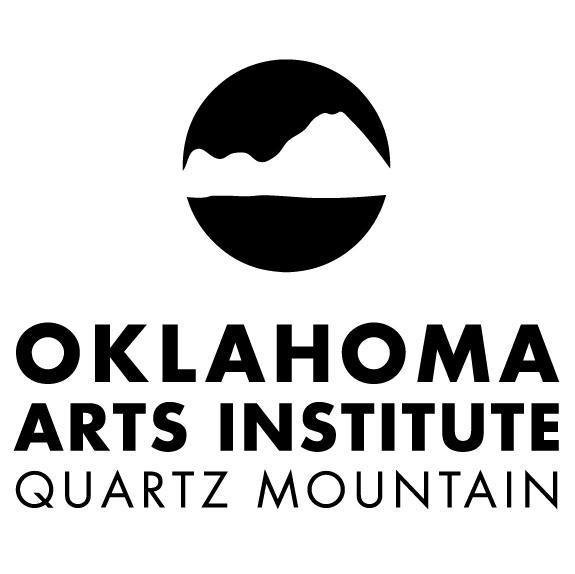
The Oklahoma Summer Arts Institute (OSAI) is an intensive two-week residential school that provides professional training to artistically talented Oklahoma high school students, including graduating seniors, in the visual, literary, and performing arts. OSAI offers training in the disciplines of acting, chorus, creative writing, dance, drawing and painting, film and video, orchestra, and photography.
Creative writing students explore writing techniques through practice, group discussion, and individual critiquing sessions with faculty. Emphasis is placed on developing a keen awareness of the sound, shape, and connotative possibilities of the written word. Various types of creative writing may be explored, but there will be a strong emphasis on poetry. Applicants should be aware that class discussions are on a collegiate level and may contain mature subject matter. Fifteen to sixteen students are accepted.
Writers with strong storytelling abilities and an interest in filmmaking are encouraged to audition for both film & video and creative writing.
Applicants must complete an online application and schedule an audition. They must also bring a writing sample of up to five pages of creative writing. Auditions happen soon, so spread the word to your students now.
- Lawton: February 6
- Oklahoma City: January 18, February 8 & 9
- Tulsa: January 25 & 26
- Yukon: January 19
|
The 2019 National Council of Teachers of English Annual Convention was held in Baltimore, Maryland, November 21-24. This was an opportunity for English teachers from across the nation to gather together to learn and inspire one another. Deb Wade, the Director of Elementary ELA, and I attended together.
Deb Wade & me
I got to hear keynote addresses from George Takei, Tommy Orange (author of There, There), and Tara Westover (author of Educated). I attended numerous panels, workshops, and round table sessions by teachers around the country as well as some big names like Carol Jago, Tom Romano, and Shawna Coppola (who led our 2019 ELA summer academy). With Piedmont's Summer Boismier, I presented on a panel on selecting texts for diverse youth to a room of over 75 people! To provide some context, I talked about Dr. Rudine Sims Bishops' theory on books as windows, mirrors, and sliding glass doors. Then Summer talked about her project-based learning initiative with her freshman students in evaluating representation of diverse voices in their school's mandated curriculum and how they advocated for change for more inclusivity. My Twitter friend Josh Thompson from Virginia joined us on the panel.
NCTE panel: Josh Thompson, Summer, and me
I stayed a few more days for the Conference on English Leadership (CEL) where I got to network with other state education agency folks, instructional coaches, and department chairs. I also presented on a panel during CEL on how to navigate leadership at varying levels. Attending CEL was a great way for me to grow as a leader, so I can better serve you in my position as the Director of Secondary ELA. My head was spinning with new ideas from both NCTE and CEL, and also I felt affirmed with the direction of ELA in our state.
Next month, I will share out some of my notes and musings, but for now, here is one more photo from the trip with two fabulous Oklahoma teachers from Edmond North High School.
Two Edmond North High School teachers joined me at the Scholastic dinner: Jackie Rasnic (bottom) & Alison Sterba (top)
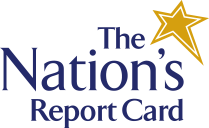
Every other year, students in 8th grade across the nation take the National Assessment of Educational Progress, otherwise known as NAEP. The 2019 results were released recently. Not every 8th grade students takes the NAEP. Schools meeting certain demographic requirements are randomly selected, and only certain students from each school take the test to achieve a representative sample. 250 school sites and 8,900 students in Oklahoma were selected to take the NAEP in spring 2019.
The NAEP reading test has literary and informational passages. 45% of the questions are multiple choice, and 55% of the questions are constructed response / short answer. Compared to Oklahoma's OSTP 8th grade test, the NAEP relies much more on constructed response.
As to the reading results, Oklahoma 8th graders scored 258, a drop from 261 in 2017. The national average also dropped 3 points in reading, from 265 to 262. Overall, 31 states had a score decrease; 19 states and the Department of Defense Education Activity (military families) had no significant change in score; and only 1 jurisdiction, the District of Columbia, had a score increase. The first assessment year of NAEP was 1992.
|
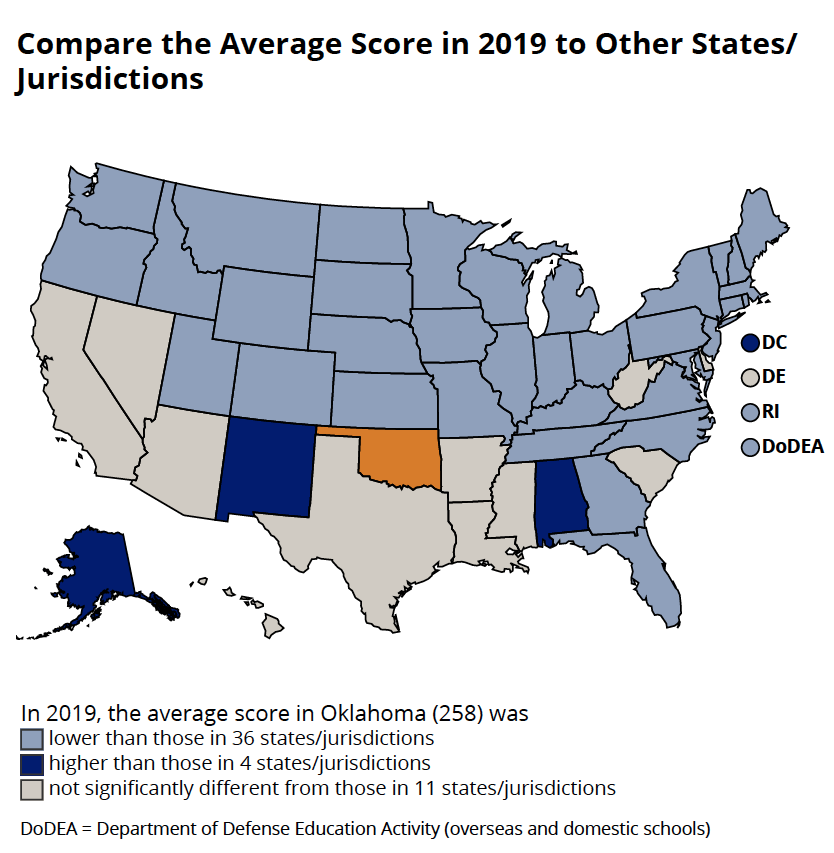 Learn more about the 2019 NAEP 8th grade reading results from NAEP's Snapshot Report. You can also watch a segment on NAEP from episode 205 of Education Matters. The segment begins at 22:37.
The NCTE Executive Committee reviewed and voted to approve revisions to three official NCTE position statements during a meeting in October. These statements were reviewed and revised by NCTE members who are subject matter experts in their respective areas.
Position statements represent the values and practices the Council considers important in the teaching and learning of English language arts. Statements like these help members explain why they do what they do and help push for changes where changes need to be made.
 EXCERPT:
Independent reading leads to an increased volume of reading. The more one reads, the better one reads. The more one reads, the more knowledge of words and language one acquires. The more one reads, the more fluent one becomes as a reader. The more one reads, the easier it becomes to sustain the mental effort necessary to comprehend complex texts. The more one reads, the more one learns about the people and happenings of our world. This increased volume of reading is essential (Allington, 2014).
READ THE FULL STATEMENT
 EXCERPT:
Learners need communicative skills in order to work collaboratively in both face-to-face and virtual environments to use and develop problem-solving skills. Cooperation is not collaboration, and learners need to be actively working with one another to pose and solve problems and construct narratives. When learning experiences are grounded in well-informed teaching practices, the use of technology allows a wider range of voices to be heard, exposing learners to opinions, perspectives, and norms outside of their own. Understanding the ways in which connections support learning and being intentional about creating connections and networks are important for learners.
READ THE FULL STATEMENT
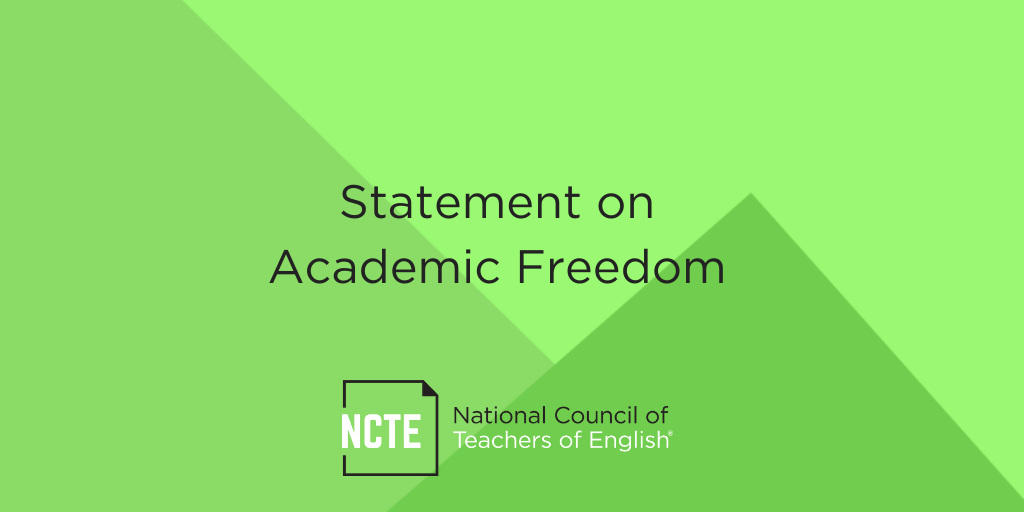 EXCERPT:
Academic freedom is a public trust earned by way of formal disciplinary training and expertise. It is an individual English educator’s (teacher’s, researcher’s, and librarian’s) right to translate, produce, and curate past and new knowledge and dispositions within broadly accepted disciplinary parameters in order to advance the common good. As a professional organization concerned with English education, NCTE contributes to the articulation of those broad parameters through its position statements, its sponsored programs, and its research, curricular, and pedagogical publications.
READ THE FULL STATEMENT
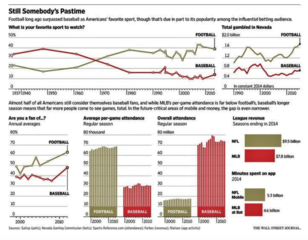
By now, you are probably familiar with Kelly Gallagher's Article of the Week, but you may not know that a math teacher named Kelly Turner also has Graph of the Week for her students.
This assignment not only helps students to become lifelong critical and analytical thinkers, but also benefits them in the following ways:
- Improve academic literacy
- Develop civically engaged students through oral discourse
- Give students a platform to share their voice and serve their interests
- Link mathematics to real-world situations
- Develop students’ habits of mind
- Improve written communication
- Give students current events awareness
- Build community among all grade levels
A recent handout paired graphs about obesity worldwide and in the U.S. specifically. If you have experience with Article of the Week, you might introduce one of your math teacher friends to Graph of the Week. And if you want to spice things up in your English class, try pairing a Graph of the Week with an Article of the Week!
|
Writing Prompt

When a blind person, Ashley, could not see, her friends helped her understand color by experiencing it. She writes, "They put my hands in their pool. They told me that that sensation I felt while swimming, that omnipresent coolness, that’s blue. Blue feels like relaxation."
Ashley's friends continued to help her understand our colorful world. "They had me stand outside in the sun. They told me that the heat I was feeling is red. They explained that red is the color of a burn, from heat, embarrassment, or even anger." You read more in the article from The Cut.
Now it's your turn. Pick a color and describe what it feels like, not what it looks like.
|
Reading Quote
 Advice Column
Since the writing modes have different grade level focuses in the Oklahoma Academic Standards, can I just teach the argument mode to my eighth grade students?
It is true that the 8th grade level mode focus is argument, but students should have plenty of practice writing all three modes--narrative, informative, and argument--throughout the school year. In this segment from the video short on Standard 3: Critical Reading & Writing, standards writing team member, Ginger Howe, explains how the grade-level focus changes as students progress through grade levels. The grade level focuses provide some guidance for teachers, but the OSTP 8th grade essay could be any of the three modes.
 |
When I was in the classroom, I taught sophomore English for a number of years. I started the school year with narrative, so I could get to know my students better. I also taught them craft moves like showing not telling, imagery, and word choice that would assist them in other modes throughout the year. From narrative, we moved on to informative writing, and we practiced skills like sentence combining, organization, and introductions. I saved argument until the end because I thought it was the most challenging. I also incorporated research standards during that essay unit.
Looking back, I wonder what I would tweak in how I taught modes of writing. If I were back in the classroom now, I would incorporate research throughout the entire year instead of just saving it for the argument essay. I would also want to show my students how to blend narrative writing into an argument. I'd also want to show my students the three modes in varying lengths, so they had more options from which to choose a mentor text.
Finally, to return back to the question, I think the narrative prompt for the 8th grade OSTP essay can prove to be quite challenging. The informative and argument prompts are more straightforward when using information from paired passages. Incorporating evidence from paired passages into a narrative essay requires creativity and abstract thinking, and students need to see that modeled and then practice it.
In short, teach all three modes of writing, and give your students lots of opportunities to practice writing--in topics of their own choice as well as practice for the OSTP. If students need some inspiration to write an argument, let them explore the ProCon.org website, which has nonpartisan pros and cons of current issues such as school uniforms, zoos, and even Santa Claus. |
|
 |
|